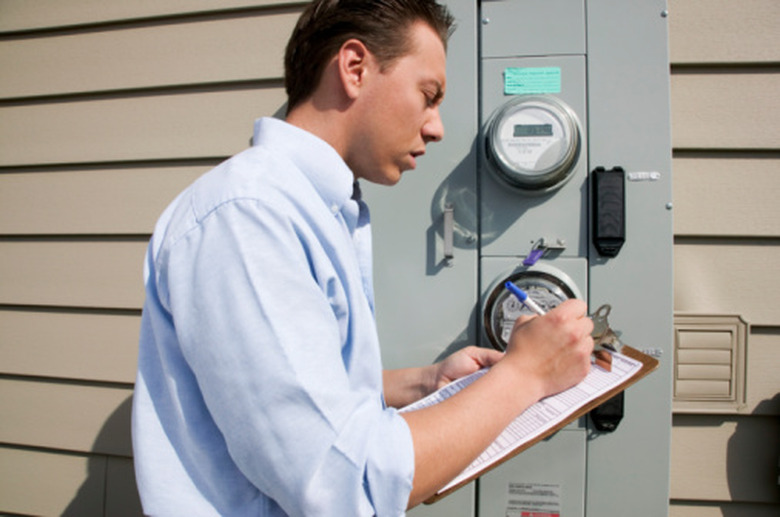Watt Hour Electric Meter Nameplate Specifications
Electric watt-hour meters are the humble servants of power utilities, dutifully recording energy consumption for residential and industrial customers alike. Nameplate specifications stamped on the face of the meter provides useful technical data to trained meter technicians. Nameplate data applies to both the classic electromechanical meter, identified by its signature revolving metal disc, and the modern solid-state electronic meter equipped with a digital liquid crystal display (LCD).
Meter Form
Meter Form
A meter's form type specifies several physical and electrical characteristics, including whether the meter was designed for single or three-phase service, quantity of meter elements, number of service wires and also if the meter is considered self-contained or transformer rated. Customers with light and medium loads can be served with self-contained meters, whereas large industrial customers usually require transformer-rated meters. Typical form types for self-contained and transformer-rated meters are designated 1S, 2S, 12S, 16S and 3S, 5S, 6S, 9S, respectively.
Watt-hour Constant (Kh)
Watt-hour Constant (Kh)
The watt-hour constant, often referred to as Kh, represents the amount of electrical energy (in watt-hours) required to spin the disc of the classic electromechanical meter one full revolution. By counting the number of disc revolutions, a customer can determine how much energy is being consumed. Although newer solid-state meters have no revolving discs, the legacy Kh notation has carried forward to its modern equivalent. A typical Kh value for a form 2S meter is 7.2 watt-hours per revolution.
ANSI Class
ANSI Class
Meters are assigned a class rating by the American National Standards Institute (ANSI) in accordance with its power-handling capability. For example, self-contained meters typically have an ANSI rating of 200 (CL 200), meaning that the meter can safely handle 200 continuous amperes of electrical current flowing through it. Other ANSI classes are the CL20 (transformer-rated), CL100 and CL320.
Test Amps
Test Amps
Similar to weights and measures in other industries, electric watt-hour meters are tested for accuracy against a calibrated standard of known accuracy. This is performed for the benefit of both consumers and the utility. The electrical current applied to the meter under test is called the test current, often referred to as test amperes and abbreviated TA.
Test ampere values are considerably less than the ANSI-class rating of the meter. Self-contained meters can have TA values of 15, 30 or 50 amperes, while 2.5 amperes is typical of transformer-rated meters.
Voltage Rating
Voltage Rating
Power companies offer customers a variety of service voltages for commercial AC power depending on load their requirements. Residential customers generally have 120/240V single-phase service while industrial customers often require three-phase 120/208V and 277/480V services. Older electro-mechanical meters were often designed to operate with a specific voltage but newer solid-state meters offer the flexibility of multi-voltage ranging functionality.
Cite This Article
MLA
Lee, Gerritt. "Watt Hour Electric Meter Nameplate Specifications" sciencing.com, https://www.sciencing.com/list-7398210-watt-electric-meter-nameplate-specifications/. 7 August 2017.
APA
Lee, Gerritt. (2017, August 7). Watt Hour Electric Meter Nameplate Specifications. sciencing.com. Retrieved from https://www.sciencing.com/list-7398210-watt-electric-meter-nameplate-specifications/
Chicago
Lee, Gerritt. Watt Hour Electric Meter Nameplate Specifications last modified March 24, 2022. https://www.sciencing.com/list-7398210-watt-electric-meter-nameplate-specifications/
